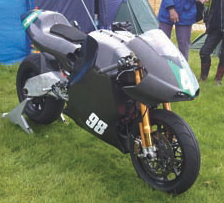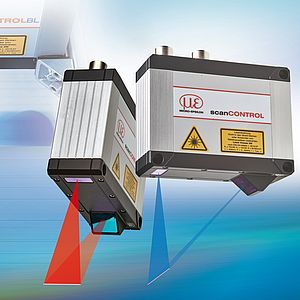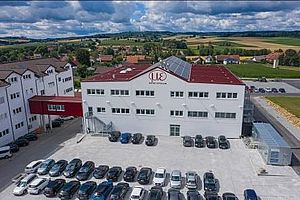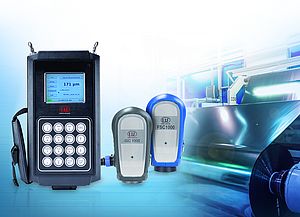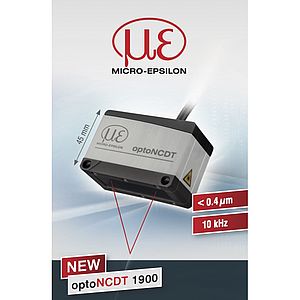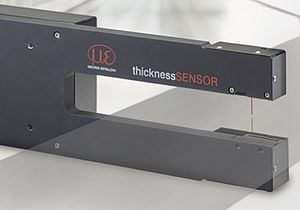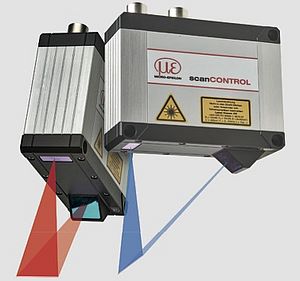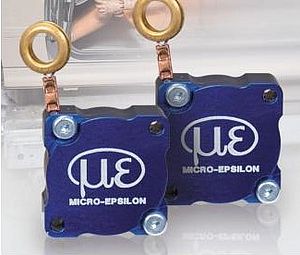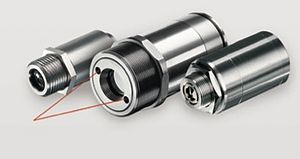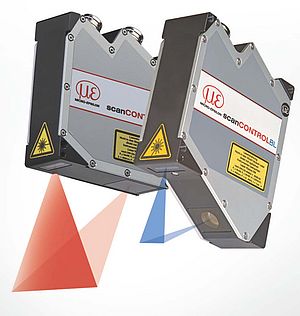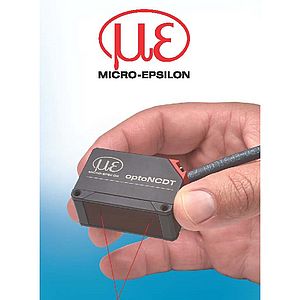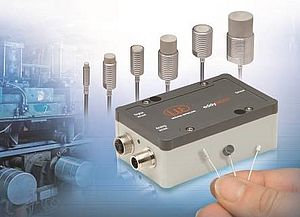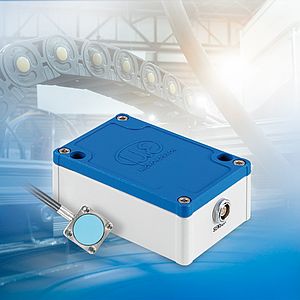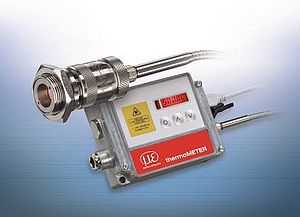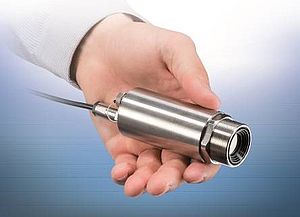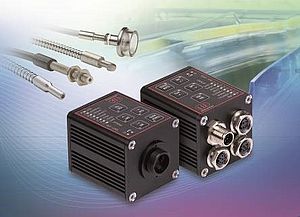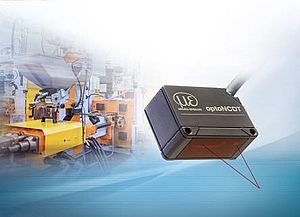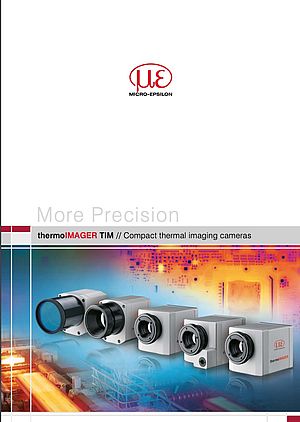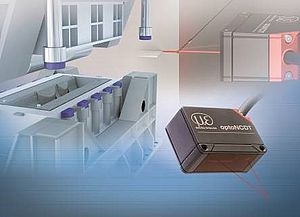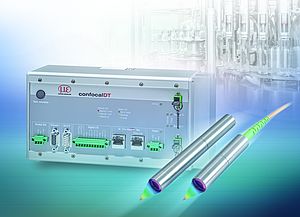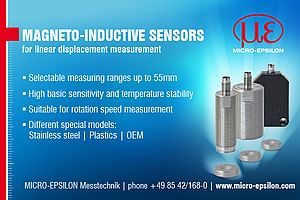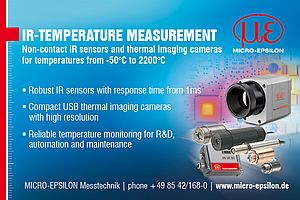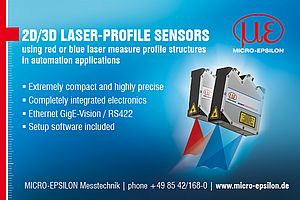During testing in early 2009, the EV-0 RR motorcycle, designed by EVO Design Solutions Ltd, utilised several different non-contact sensors to help improve the bike’s performance. All sensors and electrics used on the bike were fitted and tested by KA Sensors, a specialist provider of sensors and instrumentation equipment to the motor sports industry.
KA Sensors customised optoNCDT 1300 noncontact displacement sensor and mounted it to the nose of the bike’s chassis, with the laser window pointing down towards the ground. From here, the high speed (500Hz) sensor is able to accurately measure and monitor the ride height of the motorcycle. The sensor acts as an antiwheelie device and enables the bike’s designers to adjust the suspension characteristics and engine power mapping in order to optimise the performance of the bike, whilst reducing energy consumption.
The optoNCDT 1300 laser sensor measures displacement against almost any target surface, including shiny black rubber without contacting the object. The sensor has an integrated digital signal processor and is suitable for a wide range of applications in industrial automation and production environments, including parts measurement; surface contour measurement; epoxy placement on integrated circuits; weld seam detection on welding robots; automotive vehicle positioning and height; tool positioning; eccentricity; shape conformance; positioning on conveyors; bending and tilt angles; part recognition; thickness; deformation and waviness.
The sensor has a measuring range from 20 to 200mm, with resolution (static) from 4 to 200μm. Linearity is from 40 up to 400μm and the measuring rate is 500Hz. The sensor weighs just 100g and operates in temperatures from 0 up to 55°C.
For the EV-0 RR motorcycle, the sensor needed some customisation, as Peter Trevor, Sales Directorat KA Sensors points out: “The bike was tested on private airfield strips in Norfolk, so the conditions were pretty harsh for a standard sensor. There’s a lot of vibration, heat and dirt to contend with. So we developed a special protective, anti-vibration mounting for the sensor. We also introduced a tear-off strip for the sensor’s laser window to protect it from stone damage. This can be replaced after every test session.”
“The performance and speed of the sensor is excellent and it is extremely compact compared to alternative displacement sensors on the market. This is important because the sensors often have to be mounted in restricted spaces on the chassis or mudguards. The sensor is very competitively priced, which is important too,”explains Trevor.
On other racing bike projects, KA Sensors has used the optoNCDT 1300 sensor to measure the lean angle of the bike. For this, two identical sensors are positioned in the chassis at 45-degree angles to the ground in order to monitor the change in displacement as the bike travels around the track.
In addition to the optoNCDT 1300 sensor, KA Sensors also mounted three ‘thermoMETER CS micro’ non-contact temperature sensors on the rear wheel mudguard. These three sensors measure the temperature profile of the tyre during test racing.
The thermoMETER CS micro is a miniature infraredthermometer for OEMs. With ruggedsilicon-coated optics, the sensor can measuretemperatures from –20 up to 350°C, with thespecial motor sport version able to measure upto 1,000°C. The sensor electronics are integratedin the cable, saving space, with a separate controllerand optional USB programming interfaceand software.
As Peter Trevor states: “To KA Sensors, the Cs micro is a phenomenal piece of kit in terms of performance and benefits. Its compactness enables us to mount the sensor into mudguards to measure tyre temperatures. The three sensors measure the centre of the tyre, plus the inside and outside edge, giving us a very clear temperature profile of the tyre as the bike moves around the track.”
“This allows us to choose the best tyres and to adjust the suspension system set up of the bike. Basically, the tyres need to be hot and sticky to do their job properly. From a laptop, we can use programming software to adjust all the parameters, such as temperature measurement range and the output voltage. We’ve even used the same sensors to measure the temperature profile of brake discs on motorcycles. Just as important, the software enables us to change the emissivity of the sensor to suit different target materials, such as steel, carbon or rubber,” adds Trevor.
The measuring range of the thermoMETER CS micro is a 10:1 ratio, which means the sensor can be mounted some distance from the target. This meant that KA Sensors could mount the three sensors between 2 and 3cm from the tyre surface, without sacrificing the performance (accuracy and resolution) of the sensor and giving us more room to protect it from the harsh conditions.“
KA Sensors did some customising of the CS micro by fitting a sacrificial protection lens over the laser window. In addition, the electronics, which are integrated into the cable, were given extra protection and housed in a robust carbon tube. “We also need to strain relief the cable against excess vibrations and protect the electronics from the rough handling associated with many bike mechanics,” quips Trevor.
Trevor concludes: “We’ve been working as Micro-Epsilon’s UK motor sport partner for three years. We’ve integrated Micro-Epsilon sensors into numerous applications, including F1, GP2, A1 Grand Prix, World Touring Cars, British TouringCars, Le Mans cars, GT cars, British and World Superbikes.”


